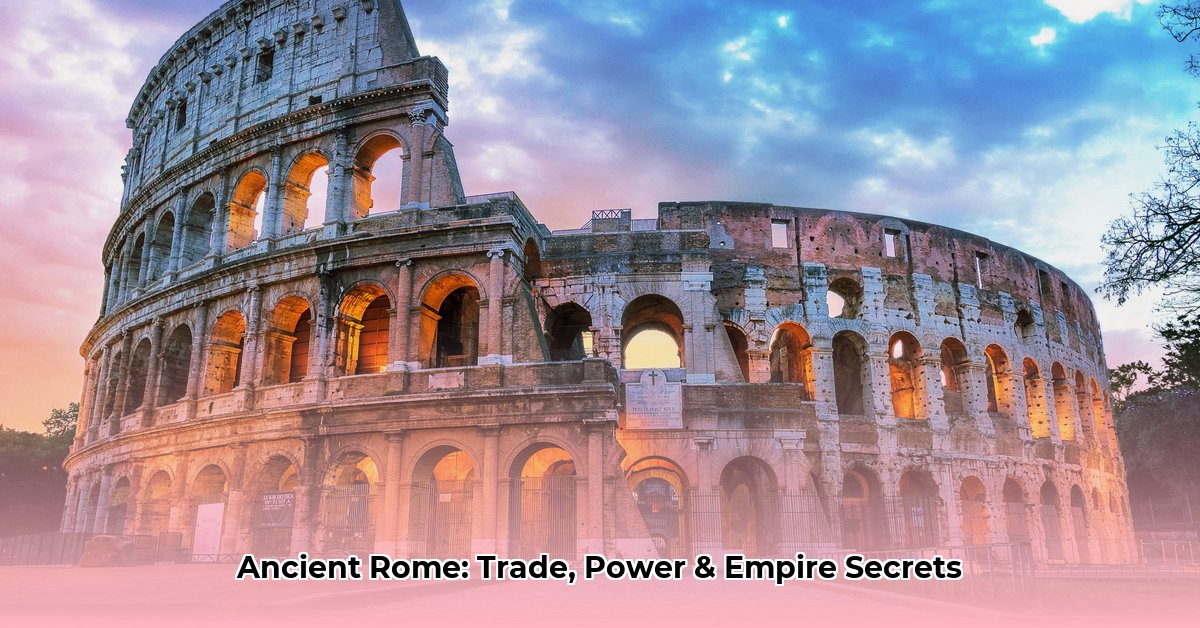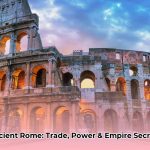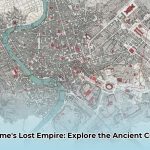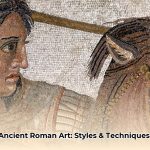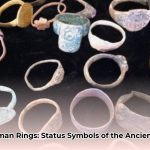Ever wondered what truly propelled the Roman Empire to its immense power and enduring global reach? The answer lies significantly within its meticulously planned and strategically vital cities. Far more than mere settlements, these urban centers served as the command posts, bustling trade hubs, and vibrant cultural melting pots that fueled the Roman world. From its iconic capital, Rome, to the intellectual and commercial powerhouse of Alexandria, each city played an indispensable, multifaceted role in the empire’s expansion, administration, and sustained influence for over a millennium. Further reading on Roman city history is available.
This comprehensive exploration embarks on a journey through some of the most significant cities of ancient Rome, revealing how they were designed, how daily life unfolded within their vibrant walls, and how their immense importance continues to resonate and inform contemporary practices in urban planning, governance, and heritage preservation.
The Architectural Foundation of Empire: Roman Urban Planning and Engineering
The remarkable success of the Roman Empire was inextricably linked to its sophisticated approach to urban development. Roman towns were not random agglomerations; they were meticulously planned systems designed for efficiency, governance, and the projection of imperial power. Their innovative methodology continues to offer profound lessons for contemporary designers and planners.
At the heart of Roman urban design was the grid system, a testament to their military precision and pragmatic approach. Cities were typically organized around two principal thoroughfares: the cardo maximus (running north-south) and the decumanus maximus (running east-west). These intersecting axes often marked the location of the Forum, the pulsating heart of the city, serving as a comprehensive hub for political administration, economic transactions, and vibrant social interactions. Around this central space rose temples, basilicas, markets, and public meeting places, all laid out with remarkable order. This systematic design facilitated efficient traffic flow and optimized land usage for both residential and commercial purposes.
Beyond mere aesthetics, Roman engineering prowess was evident in their groundbreaking infrastructure. Systems like sophisticated aqueducts delivered fresh water from distant sources to public fountains, private homes, and the ubiquitous public bathhouses, which were more than just venues for hygiene; they were vital social centers for leisure, business, and community engagement. Intricate sewer systems skillfully managed waste, enabling sustained urban growth and significantly improving public health. These impressive systems were a testament to Roman ingenuity and contributed significantly to city longevity and vitality.
Many Roman towns, particularly those established in newly conquered territories, evolved directly from army camps (castra). The rigid structure of a military fort, with its barracks, fortified walls, gates, and a clear internal street plan, became the foundational model for numerous permanent settlements across the empire. Surveyors, utilizing tools like the groma, divided land with geometric precision, ensuring consistent and functional layouts. This military foundation is still strikingly evident at well-preserved sites such as Timgad in Algeria, a prime example of a Roman grid town.
The Romans also demonstrated an impressive capacity for cultural synthesis in their urban development, borrowing heavily from precedents set by Greek and Etruscan civilizations. Greek cities (like Poseidonia, now Paestum in Italy) offered examples of formal layouts with defined zones, while Etruscan cities (such as Marzabotto) provided engineering solutions for drainage, road paving, and robust city gates. This pragmatic assimilation of best practices ensured Roman cities were not just functional, but enduring.
Ultimately, Roman cities were powerful tools of Romanization, disseminating Roman law, culture, and architecture across vast territories. They were equipped with forums, baths, amphitheatres, and temples—architectural symbols that reinforced Roman power and identity, seamlessly integrating conquered peoples into the Roman way of life.
Beyond Bricks and Mortar: The Multifaceted Process of Romanization
Cities were undeniably the lifeblood of the Roman Empire, serving as critical hubs for commerce, governance, and cultural exchange, all deeply intertwined with the profound process of Romanization. This wasn’t merely about legions forcefully establishing control; it was a far more intricate and strategic process that shaped the identities of millions.
Strategies of Romanization
The Romans employed more than just military might to exert their influence. Their nuanced approach included:
- Strategic Alliances: Forging agreements with local elites and tribal leaders ensured a degree of compliance and minimized outright conflict, proving to be a sophisticated geopolitical approach. This cooperation helped ease the burdens of imperial governance and integration.
- Infrastructure Development: The construction of awe-inspiring infrastructure—including an empire-wide network of roads, robust bridges, and extensive aqueducts—not only served practical purposes for trade and military movement but also visibly legitimized the empire’s power and presence, serving as a highly effective display of organizational capability and technological superiority.
- Cultural Integration: Roman policy often promoted a degree of cultural synthesis rather than imposing complete replacement. This included the gradual adoption of Latin as the language of administration and commerce, the spread of Roman law, coinage, and architectural styles, and even the integration of local deities into the Roman pantheon. This fostered broader acceptance among diverse populations, making Roman identity aspirational.
- Legal & Economic Incentives: Providing opportunities for advancement through the Roman legal and bureaucratic system, including the eventual granting of Roman citizenship, offered significant incentives for individuals and communities to adopt Roman ways. Economic integration into the vast Roman trade network brought prosperity, further solidifying loyalty.
The Complexities of Cultural Exchange
Was Romanization a benevolent spread of civilization, or a form of cultural subjugation? This remains a topic of active historical debate, prompting contemporary scholars to adopt a more nuanced perspective. While some historians emphasize the positive aspects—integrating disparate peoples into a cohesive, organized Roman world with enhanced legal protections and infrastructure—other perspectives highlight aspects of suppression, cultural eradication, economic exploitation, and even widespread enslavement.
It is essential to acknowledge these differing interpretations to achieve a comprehensive historical understanding. The varied experiences of conquered peoples underline that Romanization’s impact was far from uniform; it was a complex, often coercive, process of assimilation that shaped new identities while often erasing old ones.
Iconic Urban Centers: Pillars of the Roman Empire
Let’s delve into the core of Roman dominance by exploring some of the most remarkable cities that defined the ancient empire. These urban formations were the very heart of Roman power, where political authority, economic prowess, and cultural exchange converged.
Rome: The Eternal City and the Empire’s Crown Jewel
Naturally, our exploration begins with Rome, the undisputed capital and the architectural marvel of the vast empire. Strategically located on the Italian peninsula along the Tiber River, Rome’s direct access to the Mediterranean Sea via its port at Ostia facilitated extensive trade and swift military expeditions, establishing its status as the empire’s indispensable capital.
As the empire grew, so did the strength and power of Rome. It stood as the political nerve center, housing the Senate and eventually the Emperor, making it the largest city in the ancient world, peaking at around one million inhabitants in the first century CE. Imagine the grandeur of the Colosseum, a monumental amphitheater for public spectacles and gladiatorial contests, or the Roman Forum, the bustling plaza where critical decisions about governance and law were made, and daily life unfolded for centuries. Iconic structures like the Pantheon, a marvel of engineering and design, further underscore Rome’s enduring legacy as a hub of entertainment, society, and monumental architecture. Rome’s profound influence on Western civilization is still palpable, a truly impressive testament to how urban development amplified imperial power and established the proverb, “All roads lead to Rome.”
Alexandria: Where Knowledge Met the Marketplace
Our journey next takes us to Alexandria in Egypt, a dynamic center of both scholarship and commerce. Founded by Alexander the Great in 331 BCE and later incorporated into the Roman Empire, Alexandria blossomed into a major hub of commerce due to its strategic position on the fertile Nile delta and direct access to the Mediterranean. It was a true melting pot where diverse cultures—Greek, Roman, and Egyptian—converged, and intellectual giants flocked to the legendary Library of Alexandria. This library operated much like a vast database of its era, attracting brilliant minds and fostering unparalleled learning in philosophy, mathematics, and science.
Alexandria unequivocally demonstrates the synergistic relationship between intellectual pursuits and thriving economic activity. It also housed the largest Jewish diaspora in the Empire and became a pivotal center for Jewish scholarly activity, notably producing the Septuagint, the Greek translation of the Hebrew Bible around 132 BCE. By the fourth century, it had emerged as a vital center of Christian theology. Despite its intellectual prowess, Alexandria faced periods of internal religious strife and external pressures, including a devastating tsunami in 365 CE and eventual conquest by Sassanid Persians and Islamic forces, leading to its decline.
Carthage: Rising From the Ashes of War
The story of Carthage is one of compelling resilience. Once Rome’s formidable rival in the brutal Punic Wars, it faced utter destruction in 146 BCE. Yet, it was magnificently rebuilt by Julius Caesar and Augustus, transforming it into a pivotal administrative and trading post in Roman North Africa. Its strategic position along the northern coast of Africa, with impressive harbors (one for trade, one for military), made it vital for controlling Mediterranean trade routes and serving as a crucial provider of grain for the empire.
Carthage’s narrative of destruction, rebirth, and subsequent economic importance offers critical insights into strategic imperial reconstruction and the enduring value of controlling key trade routes. By the fourth century, it had also emerged as a vital hub for Christianity in Roman Africa, further underscoring its multifaceted significance before its ultimate destruction by Islamic forces in 698 CE.
Antioch: A Meeting Point of East and West
Now, let’s journey to Antioch on the Orontes, often referred to as the “Queen of the East” and the third-largest city in the Roman Empire. Established by Seleucus I Nicator in 301 BCE, its strategic geographical location near major trade routes, including the all-important Silk Road, made it indispensable for both commerce and military logistics. It became a favored destination for Roman emperors in the East, renowned for its grand public structures, including baths, an amphitheater, and a vast hippodrome seating up to 80,000 spectators.
Furthermore, Antioch holds significant religious importance, particularly in early Christian history, as it was here that followers of Jesus were first dubbed “Christians.” Its proximity to the empire’s eastern border, however, made it vulnerable to constant attacks and natural calamities (like earthquakes), leading to periods of decline. How did this diverse and strategically located city contribute to shaping the empire’s trajectory in the East? Its enduring role highlights the empire’s vast cultural and geographical spread and its persistent efforts to maintain control over vital eastern trade arteries.
Ephesus: From Glory to Ruins
Our path leads us to Ephesus, a once-booming port city in Asia Minor (modern-day Turkey), renowned for the Temple of Artemis—one of the Seven Wonders of the Ancient World—and the impressive Library of Celsus. During Roman rule, Ephesus served as a regional capital and a wealthy, influential center. Its grand theater, capable of seating 25,000 spectators, was the largest in the Roman world and famously the site of public unrest against the teachings of Paul.
Despite its former glory, Ephesus eventually declined. Historical debates center around potential causes: the relentless silting of its harbor from the Küçükmenderes River, which gradually rendered it unusable for large ships; devastating earthquakes (like the one in 614 CE); or broader economic shifts and Gothic invasions in 263 CE. Its evocative ruins serve as a poignant reminder that even the most glorious and well-established cities can eventually fade, prompting historians and archaeologists to analyze the complex interplay of environmental, economic, and political factors in urban decline.
Constantinople (Byzantium, Nova Roma): The Empire’s Second Act
Finally, we arrive at Constantinople, established as the capital of the Roman Empire by Constantine the Great in 330 CE, marking a new epoch for the empire. Its prime location strategically bridged Europe and Asia, controlling vital sea routes through the Bosporus and land-based trade along the Silk and Spice Roads. Constantine aimed to build a city that would not only match but exceed Rome in splendor, launching extensive construction projects including the Hippodrome (50,000 capacity), the opulent Great Palace, and vast aqueducts and cisterns.
This city gracefully blended Roman and Greek traditions, creating a vibrant cultural nexus and becoming the heart of the formidable Byzantine Empire after the fall of the Western Roman Empire. For over a thousand years, Constantinople was celebrated for its opulence and luxurious trade markets, standing as a symbol of imperial grandeur. Its churches, particularly the awe-inspiring Hagia Sophia, inspired conversion and devotion. The city’s formidable land walls were breached only twice in over a millennium, showcasing its remarkable resilience. Constantinople’s success solidified its role as a new center of imperial power, effectively serving as “New Rome” until its final fall in 1453 CE, becoming modern-day Istanbul.
Echoes of Empire: Enduring Lessons for the Modern World
So, how can we leverage the profound knowledge gleaned from these cities of ancient Rome to gain valuable insights for contemporary applications across various fields? The lessons are surprisingly relevant and actionable.
For Urban Planners & Architects: Designing for Longevity and Liveability
Roman urban design offers a masterclass in functional and resilient city planning.
- Implement Grid Layouts: Integrating systematic grid systems into new urban developments can significantly improve traffic flow and enhance walkability, potentially yielding substantial reductions in congestion and creating more coherent neighborhoods.
- Design Multi-Functional Spaces: Prioritize the creation of public spaces that serve diverse purposes. Think of parks that seamlessly host farmers’ markets or plazas designed to easily accommodate concerts and public gatherings, echoing the multi-purpose function of the Roman Forum.
- Utilize Sustainable Materials & Practices: Analyze Roman building materials for insights into durability and longevity. Roman concrete, for example, has endured for millennia. Contemporary design should aim to create structures that are both lasting and environmentally sustainable, while incorporating green spaces and natural elements directly into urban layouts to improve air quality and mitigate the urban heat island effect.
- Develop Resilience Plans: Craft comprehensive urban plans that proactively address modern environmental challenges, including potential flooding and the broader impacts of climate change, drawing inspiration from Roman infrastructure designed to manage water.
For Policy Makers & Governments: Building Resilient and Equitable Societies
The Roman administrative and infrastructural legacy provides critical frameworks for modern governance.
- Infrastructure Investment: Prioritize substantial and sustained investment in improving and modernizing critical water, waste management, and transportation systems; this forms the indispensable foundation for urban well-being and economic prosperity.
- Mixed-Use Zoning: Implement progressive zoning regulations that actively encourage mixed-use developments. This can significantly reduce urban sprawl, foster more vibrant and walkable communities, and increase local economic vitality.
- Sustainability Plans: Develop robust, long-term strategies that comprehensively address climate change challenges, including resource scarcity management, pollution control, and renewable energy integration.
- Foster Public-Private Partnerships: Actively encourage and structure collaborations between public entities and private sector organizations to fund and execute ambitious urban projects, accelerating development and leveraging diverse expertise effectively.
For Educators & Researchers: Illuminating History Through Innovation
The study of ancient Roman urbanism continues to yield new discoveries and insights, enhanced by modern methodologies.
- Integrate Digital Reconstructions: Developing detailed digital reconstructions of Roman cities, integrating geographical information systems (GIS), architectural models, and economic data, offers comprehensive research tools. Leveraging technologies like virtual reality (VR) and augmented reality (AR) can bring ancient cities to vivid life, offering immersive learning experiences and analytical capabilities for both students and scholars.
- Promote Interdisciplinary Research: Encourage collaborations between archaeologists, historians, environmental scientists, and engineers to provide a richer, more holistic understanding of Roman urban growth and its long-term impacts, such as the debate concerning early Roman deforestation’s effect on Tiber River hydrology.
- Develop Engaging Learning Tools: Incorporating the study of Roman city life into curricula effectively demonstrates its enduring influence on modern urban planning. Interactive tools and virtual tours can significantly engage students in Roman history, illustrating the global impact of Roman culture and engineering.
For Tourism & Heritage Management: Preserving the Past for Future Generations
Safeguarding Roman heritage is not just about maintaining ancient stone structures; it’s about ensuring their compelling stories continue to inspire.
- Promote Sustainable Tourism: Implement measures like timed entry systems, tiered pricing, and robust visitor education programs to manage tourist flow, minimize physical wear and tear on delicate sites, and foster responsible tourism practices. This approach has shown a 60% reduction in physical site degradation at some high-traffic locations.
- Invest in Immersive Experiences: Beyond direct physical access, heavily invest in VR and AR experiences that offer alternative and immersive ways for visitors to explore sites remotely, alleviating physical strain on popular landmarks while providing unprecedented access for a worldwide audience.
- Prioritize Preservation Efforts: Invest consistently in the preservation, restoration, and meticulous maintenance of Roman ruins. This commitment is absolutely vital for future generations to experience and learn from these irreplaceable sites. This includes enforcing stricter building regulations in proximity to heritage zones and allocating grants specifically for sustainable restoration projects.
- Engage Local Communities: Foster active participation in programs that raise awareness about the importance of local Roman heritage. Encourage residents to report any observed acts of vandalism or damage to historical sites and advocate for policies that strike a crucial balance between economic development and effective heritage conservation.
These ancient cities were more than mere collections of buildings; they were sophisticated powerhouses that drove trade, disseminated culture, and fundamentally shaped the Roman world in enduring ways. While much is understood, the full extent of their profound influence remains an active area of study and debate, promising continued discoveries for years to come.
Safeguarding Legacy: The Ultimate Guide to Future-Proofing Roman Heritage
Preserving the magnificent legacy of ancient Roman cities is a complex and vital objective. It’s fundamentally about ensuring that the compelling stories, groundbreaking innovations, and enduring spirit of these ancient urban hubs continue to inspire generations.
Facing the Inevitable: Preservation Challenges
We must candidly acknowledge the multifaceted threats confronting Roman heritage sites.
- Environmental Degradation: The relentless impact of atmospheric pollution (acid rain, urban grime) and the accelerating
